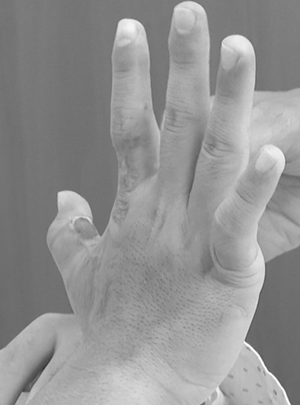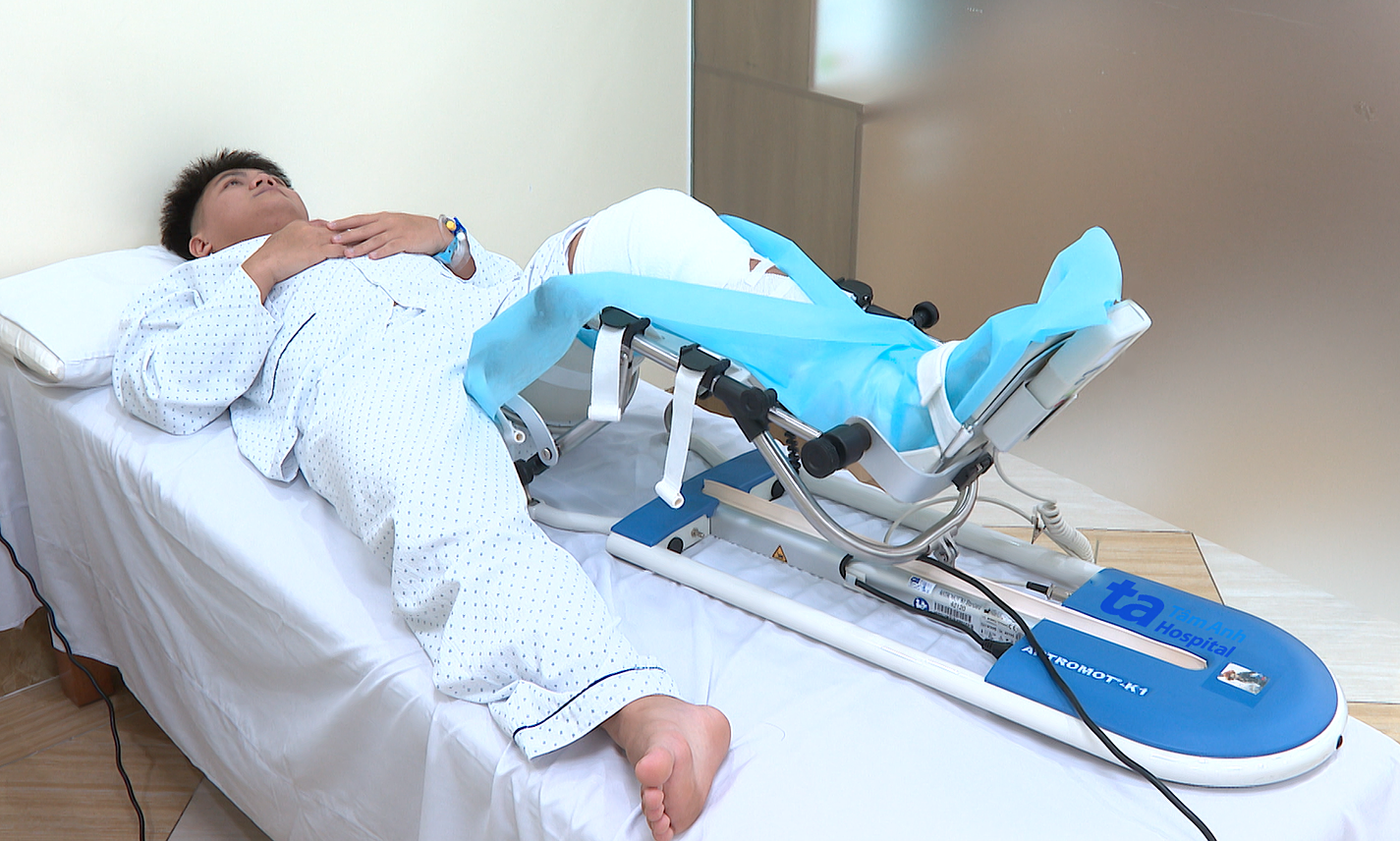A month after the accident, Qui experienced instability and looseness in his left knee, prompting him to seek treatment at Tam Anh General Hospital in Hanoi. Dr. Nguyen Ngoc Tiep, from the Orthopedic Trauma department, diagnosed excessive forward movement of Qui’s tibia, resulting in knee instability. An MRI scan confirmed a partially torn anterior cruciate ligament (ACL).
Qui also had a 4th-degree burn on his finger, 2 cm wide and deep enough to expose tendons and necrotic tissue, preventing natural healing. Bacterial analysis revealed a methicillin-resistant Staphylococcus aureus (MRSA) infection.
Doctors prioritized treating the more immediate and potentially life-threatening burn infection. They determined that controlling the antibiotic-resistant bacteria in his hand was crucial to minimize the risk of infection during the subsequent knee surgery. The treatment plan included debridement of the burn, broad-spectrum antibiotics, and a skin graft, followed by ACL reconstruction once the hand had healed.
In the first surgery, Dr. Tiep performed a kite flap rotation technique, transferring a skin flap with its blood supply from Qui’s index finger to cover the defect on his thumb. Skin from his wrist was then used to replace the skin taken from his index finger, and all wounds were closed.
 |
The patient's hand one month after the skin graft surgery. Photo: *Tam Anh General Hospital* |
After two days, with stable sutures, Qui began finger rehabilitation exercises to prevent muscle contractures. Five days post-surgery, the skin grafts were healthy and infection-free, allowing him to be discharged. At a one-month follow-up appointment, Dr. Tiep confirmed the hand wound had healed well, with minimal scarring and 90% of thumb mobility restored. The skin grafts blended well in terms of pigmentation, promising a good cosmetic outcome.
Given Qui's young age and physically demanding work, full ligament reconstruction was necessary to prevent secondary complications like meniscus tears or complete rupture of the remaining ACL. In the second surgery, under spinal anesthesia, Dr. Tiep used small incisions to harvest a hamstring tendon graft and reconstructed the torn ACL using the "all-inside" technique. This method preserves remaining nerve receptors at the ligament's base, minimizing invasiveness and complications while promoting the return of knee sensation after recovery.
 |
Qui undergoing rehabilitation with a passive lower limb flexion and extension machine. Photo: *Tam Anh General Hospital* |
One day after surgery, Qui began knee rehabilitation. His healed hand allowed him to use crutches, and he was discharged after three days. Physiotherapists provided home exercises to maintain knee range of motion. A two-month follow-up appointment will include a comparative assessment of both knees using the Compass 600 system, providing detailed data and charts. Once the left knee's parameters reach 90% of the right knee's, Qui can resume strenuous activities and sports.
Dr. Tiep emphasized that electrical injuries often cause multi-organ damage, ranging from burns and secondary spinal and musculoskeletal injuries from falls to cardiovascular and neurological issues. He recommends seeking treatment at a multi-specialty hospital with advanced facilities for comprehensive assessment and prompt diagnosis.
Thanh Long












